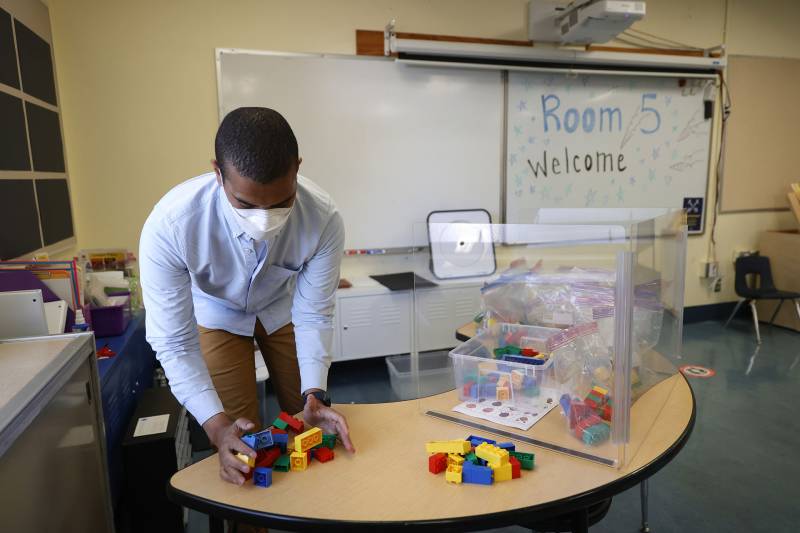“The solutions that are available aren’t often the solutions we would want for our children — cutting classes and combining classes, or trying to fill classes with substitutes and teachers on emergency credentials who haven’t demonstrated competency in the subjects they are teaching,” said Desiree Carver-Thomas, one of the authors of the report. “What we would want is for classes to be filled with competent teachers that are experienced. Instead they are scrambling to find those people and are relying on strategies that aren’t necessarily ideal.”
With only a limited number of candidates for jobs, many districts are focusing on retaining the teachers they do have by working to improve their working conditions, a strategy that often includes hiring additional classroom support staff, according to the study. Several of the districts surveyed had recently increased teacher pay, while one large district had focused on building its pool of substitute teachers by increasing their daily rates.
Some rural districts, where the eligible hiring pool is typically much smaller, have particularly struggled to attract teachers despite offering signing bonuses and relocation stipends, Carver-Thomas said.
One of the small districts surveyed offered teachers a $15,000 signing bonus and a $3,000 moving stipend to fill positions in high school mathematics and music, but had yet to receive any applications for those jobs, according to the study.
Some districts that can’t hire enough new teachers are trying to lighten the load of their existing workforce by using state and federal recovery dollars to bring on more classroom aides, counselors, psychologists, social workers, instructional coaches and assistant principals. A number of districts are also investing in recruitment operations, hiring more human resources staff, streamlining their recruitment process and increasing their presence at virtual and in-person job fairs.
“Each district had its own strategy — from what we heard, it’s a holistic set of strategies,” Carver-Thomas said. “They are doing everything they can, making classes smaller, hiring counselors, hiring instruction aides.”
The report also acknowledges the state’s record investment in teacher preparation, retention and training over the last two years. The budget proposed by Gov. Gavin Newsom earlier this month includes more than $54 million to recruit teachers and make it easier for them to earn a credential. Carver-Thomas said these funds can be used to support some of the report’s recommendations for increasing the number of teachers available.
Among the report's suggestions:
-
- School districts should increase teacher compensation by increasing wages, and offering stipends and bonuses, especially for hard-to-fill positions. They should develop their teacher pipeline by starting teacher residency programs and initiatives that recruit and train school staff to become teachers as they earn a credential. Districts should also continue to invest in teacher recruitment and add more staff to support teachers.
-
- The federal government should make teaching more financially attractive by making college debt-free for students who commit to becoming educators, and providing income tax credits and housing subsidies.
-
- California should implement a program to help teacher candidates navigate preparation programs, credentialing requirements and funding opportunities. It should also invest in programs that allow students to begin teacher preparation at community colleges and complete it at a four-year institution.
-
- Universities should increase enrollment in teacher preparation programs, especially in high-demand education fields.
This article was originally published by EdSource.



